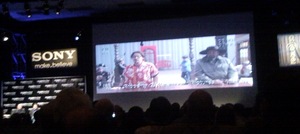The making of an independent film is a challenge in itself. There are many things to take into consideration in terms of budget and resources. The workflow may vary depending on many aspects affecting the production, but essentially, everything works around the same vision for the film. In the case of an independent animation project, the more specific technical requirements also vary depending on the type of animation to be utilized in the production.
Animation Workflows
The workflows used in traditional animation projects follow a similar pipeline with very minimal differences on the steps to follow. However, in computer animation, with the countless animation techniques and looks available for both 2D and 3D works, workflow options can really change dramatically from one production to another. While an animated film with decent budget can explore several technical resources to aid the production, one with a conservative budget needs to look for more innovative but practical ways to make their visions come to life.
Motion Capture vs. Performance Capture
Big-budget animation projects can use motion-capture and motion-control technology to match actors’ performances and miniature shots with the animated visuals. For an independent movie, this is not a practical solution. Performance capture is a more ideal option.
Technically speaking, motion-capture can also be described and referred to as performance capture. However, not all performance capture works utilize motion-capture technology. The idea of performance capture is to acquire a real actor’s performance, then incorporate this in the animation process. Meanwhile, motion-capture requires the use of a virtual camera that records the movements of the actor, then have this mapped into a 3D model that will produce the exact actions of the actor.
In performance capture, independent filmmakers don’t necessarily need all the high-tech production equipment. They can simply use any video camera and record the film similar to any live-action production, then they turn over the footage to the animators. The animators will then use the footage as reference on how they will animate the characters. This may sound quite “old school,” but it actually makes wonders to even contemporary animated productions. It allows the animators to use their artistic abilities to interpret the performance of an actor in the animation, while also allowing more distinct and genuine emotions to become part of the final animated character.
Animators as Actors
Even animators would normally consider themselves as actors, in one way or another. Some even have their own large mirrors in their animation work stations. While drawing or doing any animation-related tasks, they would sometimes (or usually) act out in the mirror and base their art works on the details they see on their own acting, their human features, and their reactions. This makes their work look more authentic, especially with the emotional investments needed in a film’s characters.
Hollywood Uses this “Old School” Style, Too!
Interestingly, even big Hollywood projects tend to use performance capture work without the aid of motion-capture equipment. In the case of the film “Rango,” the production team presented at the 2011 NAB Show and they showed footage of scenes shot as if Johnny Depp and the rest of the actors were actually shot in a live-action production, but ideally, the video footage were only reference videos for the making of the animation. From the camera angles to the costumes to the acting, everything was basically set-up according to how director Gore Verbinski envisioned the final animation on the big screen, then the animators simply used the live footage as reference guide to make the characters look and feel “human” in its own animated world.




